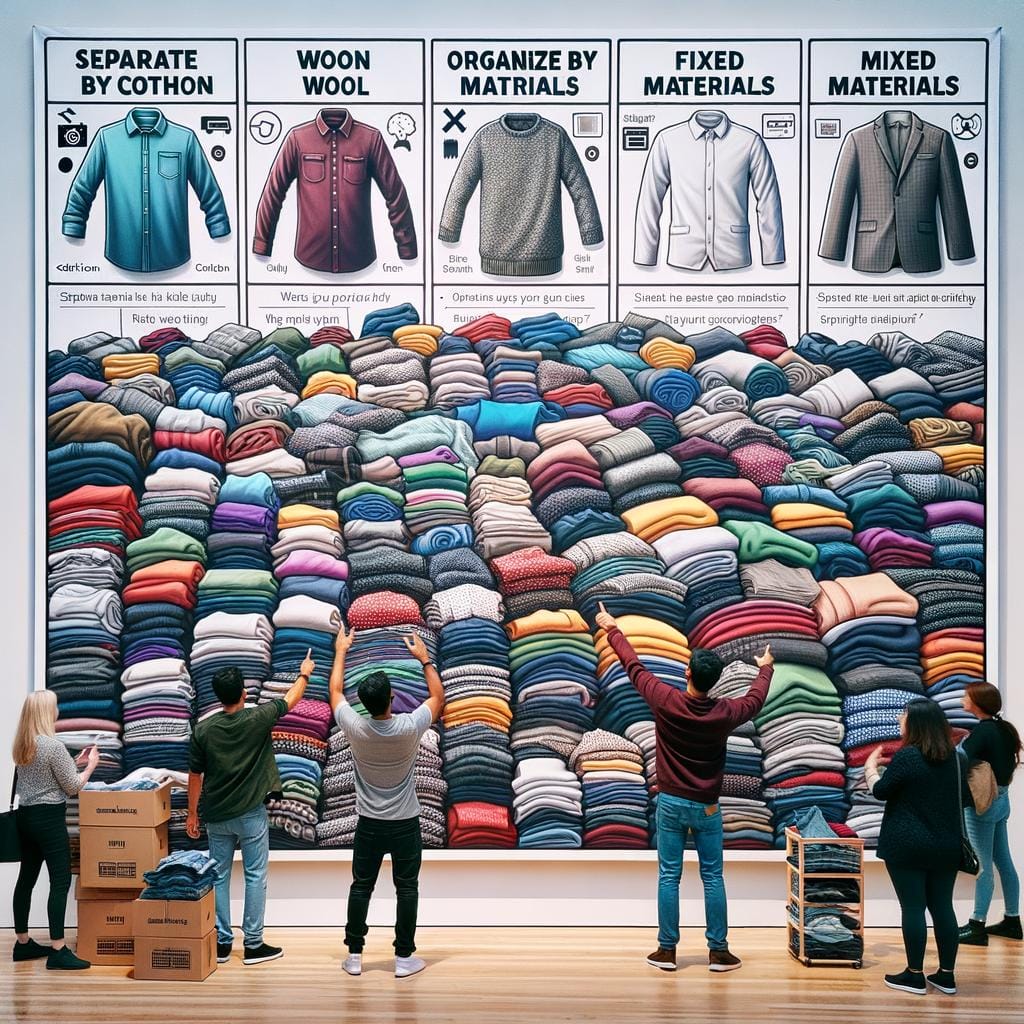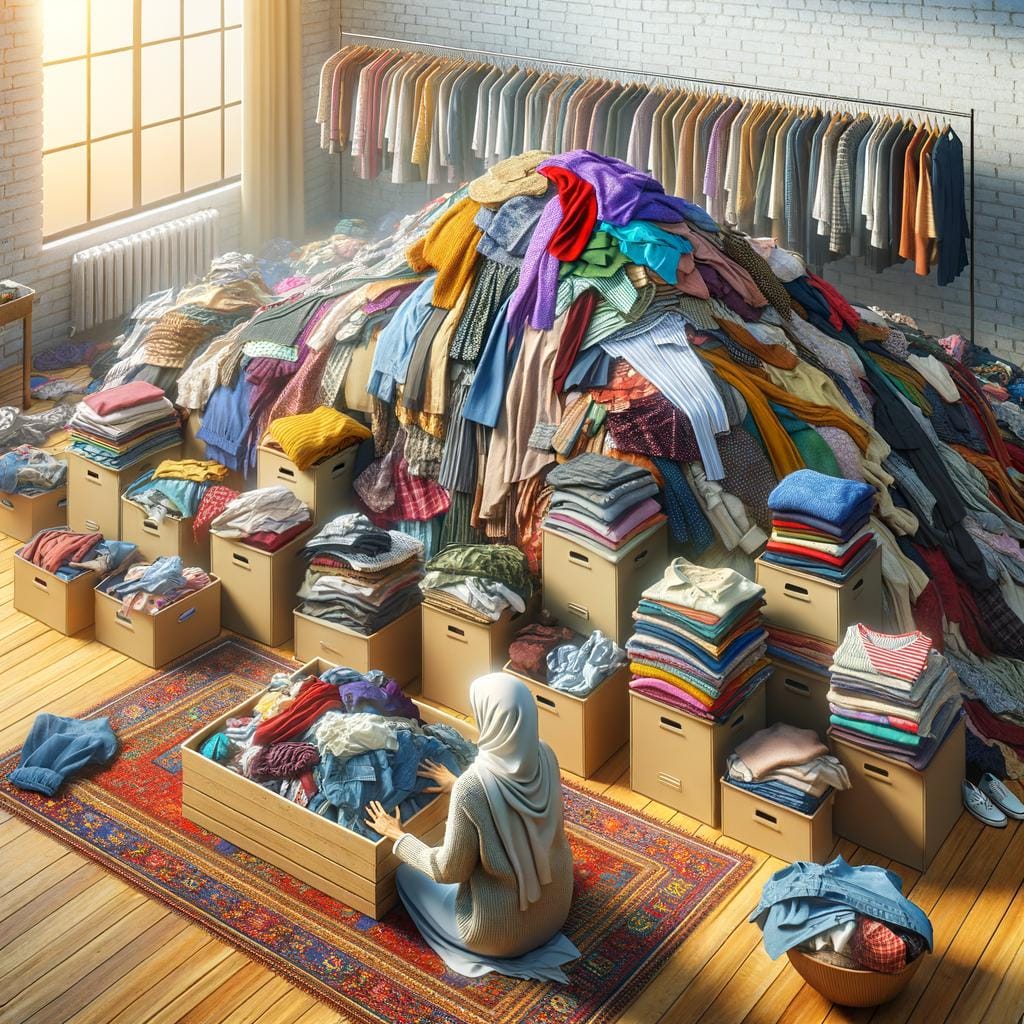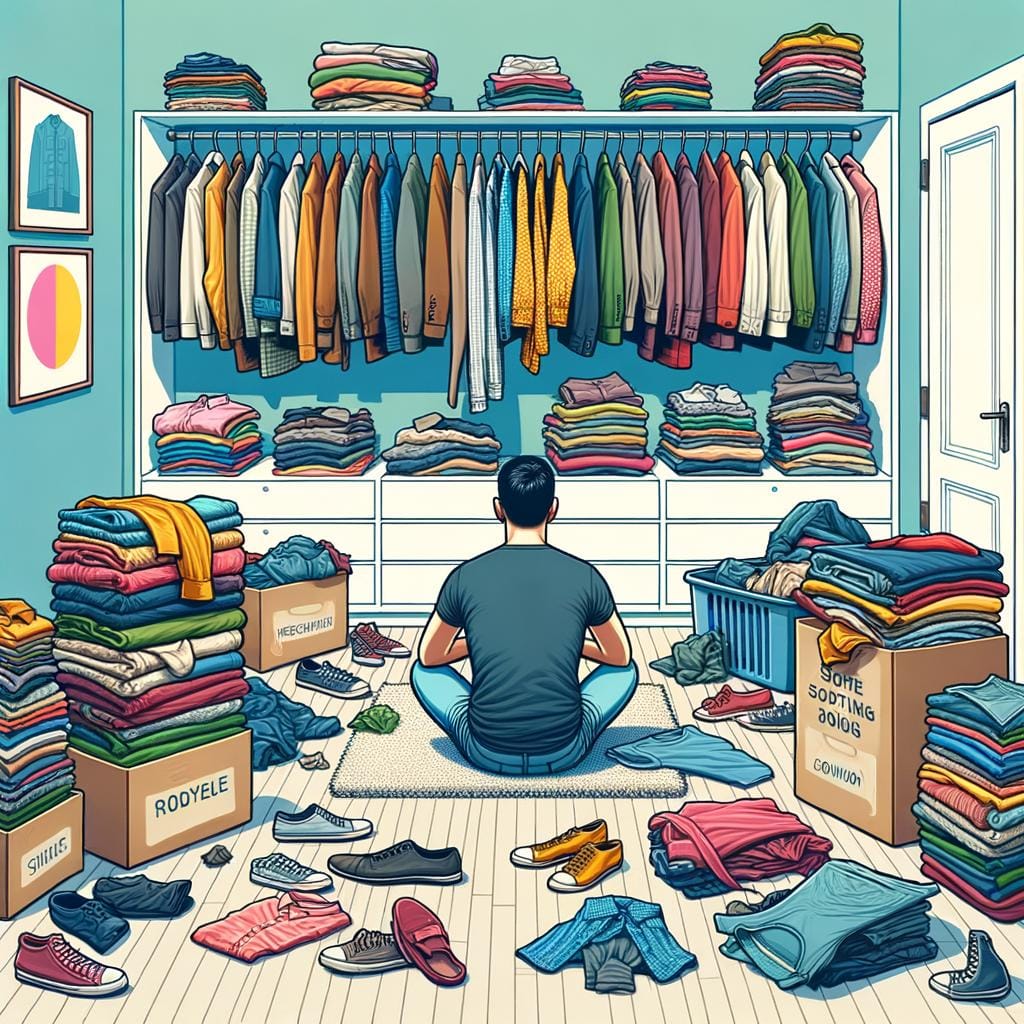When it comes to maintaining an organized and functional wardrobe, mastering the art of clothing sorting is essential. Effective clothing sorting tips can help you declutter your closet, streamline your morning routine, and even save you time and money in the long run. By implementing strategic techniques and understanding different clothing categories, you can transform your chaotic closet into a well-curated collection that sparks joy and efficiency in your everyday life.
Sorting clothes is not just about keeping your closet neat; it’s also about ensuring that each item serves a purpose and brings value to your personal style. By organizing your wardrobe, you can easily identify pieces that no longer fit or align with your current lifestyle, allowing you to make more conscious decisions about what to keep, donate, or discard.
This process of decluttering not only frees up physical space but also creates mental clarity and a sense of empowerment as you take control of your belongings.
In this comprehensive guide to clothing sorting, we will explore the various benefits of organizing your closet, provide a step-by-step approach to sorting clothes effectively, offer tips for decluttering your wardrobe, delve into different clothing categories, share strategies for efficient sorting, discuss how to store and maintain your clothes properly, and introduce creative ideas for repurposing or upcycling unwanted clothing items.
By the end of this article, you will have the tools and knowledge needed to transform your wardrobe from chaos to order while reaping the many rewards that come with a well-organized closet.
Benefits of Organizing Your Closet
Organizing your closet may seem like a tedious task, but the benefits are truly worth the effort. One of the main advantages of having a well-organized closet is that it can save you time in the morning when getting ready for the day.
By knowing exactly where each item of clothing is located, you can easily pick out an outfit without rummaging through piles of clothes. This not only streamlines your morning routine but also helps reduce stress and decision fatigue.
Additionally, organizing your closet can help extend the lifespan of your clothing. When clothes are haphazardly thrown together or crammed into a small space, they are more likely to get damaged or wrinkled.
By properly hanging or folding your clothes and storing them in a neat manner, you can prevent unnecessary wear and tear on your garments. This can ultimately save you money in the long run by reducing the frequency at which you need to replace items due to damage.
Furthermore, a well-organized closet can help you better assess what clothing items you have and what may be missing from your wardrobe. This can assist you in making more informed shopping decisions and prevent impulse purchases on items that duplicate what you already own.
Being able to see all of your clothes clearly laid out in front of you can give you a better perspective on your personal style and help you curate a wardrobe that truly reflects who you are. By regularly employing clothing sorting tips, you can maintain an organized closet that not only serves a functional purpose but also brings joy and satisfaction to your daily life.
Step-by-Step Guide to Sorting Clothes
When it comes to keeping your wardrobe organized and clutter-free, having a step-by-step guide to sorting clothes can be incredibly helpful. Not only does this process make it easier to find what you need when getting dressed, but it also helps in identifying items that may no longer serve a purpose in your collection. Here are some tips and tricks to help you effectively sort through your clothing:
- Start by Emptying: Begin by emptying your entire closet or dresser. This allows you to see all of your clothing items at once and prevents any pieces from being overlooked.
- Sort by Category: Divide your clothes into categories such as tops, bottoms, dresses, outerwear, and accessories. This makes it easier to evaluate each type of garment individually.
- Use the “Keep, Donate, Sell, Toss” Method: As you go through each category, use the “Keep, Donate, Sell, Toss” method. Keep items that you wear regularly and love, donate those that no longer fit or suit your style, sell any gently used pieces for extra cash, and toss anything that is damaged beyond repair.
By following these steps and implementing some clothing sorting tips into your routine, you can maintain a well-organized wardrobe that reflects your personal style and lifestyle needs. Remember that decluttering and sorting clothes is an ongoing process, so set aside time periodically to revisit and reevaluate your collection.
Tips for Decluttering Your Wardrobe
When it comes to decluttering your wardrobe, it can feel like a daunting task to tackle the piles of clothes accumulated over the years. However, with some strategic planning and effective tips, you can efficiently sort through your clothing items and create a more organized closet space. Here are some helpful tips for decluttering your wardrobe:
Start With a Plan
Before diving into the decluttering process, it’s essential to create a plan of action. Start by setting specific goals for your wardrobe organization, such as reducing the number of items you own, creating a more cohesive wardrobe, or making space for new pieces. Having a clear plan will help you stay focused and motivated throughout the decluttering process.
Use the KonMari Method
Inspired by Marie Kondo’s famous decluttering technique, the KonMari Method involves sorting through your clothing items by category and only keeping items that “spark joy.” As you go through each category (such as tops, bottoms, dresses), hold each item in your hands and decide if it brings you happiness. If not, thank the item for its service and let it go. This method helps you make conscious decisions about what to keep in your wardrobe.
Donate or Sell Unwanted Items
As you declutter your wardrobe, consider donating or selling unwanted clothing items instead of throwing them away. Clothes that no longer fit or suit your style can find new life with someone else. You can donate to local charities or shelters or sell items online through platforms like Poshmark or ThredUp. By giving your unwanted clothes a second chance, you contribute to sustainable fashion practices and help reduce textile waste.
Understanding Different Clothing Categories
When it comes to sorting through your wardrobe, it’s essential to understand the different categories of clothing items you may have. By organizing your clothes into specific groups, you can easily find what you need and create a more streamlined closet. Here are some common clothing categories to consider:
- Tops: This category includes shirts, blouses, sweaters, and other garments that go on the upper part of your body.
- Bottoms: Pants, skirts, shorts, and leggings are all part of this category. Organizing them by type or color can make getting dressed in the morning a breeze.
- Dresses: Whether they’re casual sundresses or formal evening gowns, dresses deserve their own category for easy access.
Once you have categorized your clothing items into these main groups, you can further subdivide them based on specific characteristics such as color, fabric, seasonality, or occasion. This level of organization will not only help you keep track of your clothes but also allow you to see what pieces you have an abundance of and where there may be gaps in your wardrobe.
Another important aspect of understanding different clothing categories is recognizing which items no longer serve a purpose in your collection. Be honest with yourself about whether certain pieces fit correctly, are still in style, or bring you joy when wearing them. By being mindful during the sorting process, you can create space for new additions that better align with your current fashion preferences and lifestyle.
By mastering the art of categorizing your clothes and being selective about what stays in your closet, you can transform the way you approach getting dressed each day. These clothing sorting tips will not only save you time when choosing outfits but also ensure that every piece in your wardrobe serves a valuable purpose.
Strategies for Efficient Clothing Sorting
When it comes to efficiently sorting your clothing, there are several strategies you can implement to make the process smoother and more effective. By following these tips, you can save time, declutter effectively, and ensure that your wardrobe is organized in a way that makes sense for you.
Set Clear Goals
Before you start sorting through your clothes, it’s important to set clear goals for yourself. Decide what you want to achieve from this process – whether it’s decluttering, organizing by season, or simply making more space in your closet. Having a clear goal in mind will help keep you focused and motivated throughout the sorting process.
Use the Three-Pile System
One effective method for sorting through your clothes is to use the three-pile system. Create three separate piles: keep, donate/sell, and discard. As you go through each item of clothing, place it in one of these piles based on whether you want to keep it, donate or sell it, or throw it away due to damage or wear.
Organize by Category
To make finding items easier in the future, consider organizing your clothes by category during the sorting process. Group similar items together – such as tops, bottoms, dresses, outerwear – so that you can easily see what you have and avoid duplicate purchases. This method also makes it easier to maintain an organized closet in the long-term.
By implementing these clothing sorting tips into your routine, you can streamline the process of decluttering and organizing your wardrobe efficiently. Remember that getting rid of items that no longer serve a purpose can help create a more functional closet space and simplify your daily outfit choices.
How to Store and Maintain Your Clothes
Storing and maintaining your clothes properly is essential to prolonging their lifespan and keeping them in good condition. By implementing effective storage solutions and following maintenance tips, you can ensure that your favorite pieces remain looking great for longer periods of time.
One important aspect of storing clothes is to invest in the right hangers and storage containers. Use wooden or padded hangers for delicate items like silk blouses or dresses to prevent them from getting misshapen. Additionally, clear plastic bins or garment bags are great for storing off-season clothing or items that you don’t wear frequently, protecting them from dust and pests.
Another key tip for clothing maintenance is to follow the care instructions on the labels of your garments. This includes washing clothes in the appropriate water temperature, using the correct cycle settings on your washing machine, and avoiding putting certain fabrics in the dryer. Proper care not only preserves the quality of your clothes but also prevents potential damage such as shrinking or fading.
Lastly, consider organizing your closet by color or type of clothing to make it easier to find and maintain your items. Keep similar items together and designate specific areas for different categories such as tops, bottoms, dresses, and outerwear. This not only streamlines your daily routine but also makes it simpler to assess what pieces may need repair or cleaning.
| Clothing Storage Tips | Clothing Maintenance Suggestions |
|---|---|
| Invest in appropriate hangers | Follow care instructions on garment labels |
| Use clear storage containers | Avoid putting delicate fabrics in the dryer |
| Organize closet by color or type | Designate areas for different clothing categories |
Creative Ideas for Repurposing or Upcycling Unwanted Clothing Items
When it comes to decluttering your wardrobe and getting rid of unwanted clothing items, it’s important to consider more sustainable options than just throwing them away. Repurposing or upcycling old clothes can not only reduce waste but also give these items a new life and purpose. There are plenty of creative ideas you can explore to transform your old garments into something unique and useful.
One popular way to repurpose old clothes is by turning them into new accessories such as bags, scarves, headbands, or even jewelry. For example, an old t-shirt can be cut and braided into a colorful scarf, or denim jeans can be transformed into a stylish tote bag. This not only gives your old clothes a fresh look but also allows you to customize your accessories according to your style and preferences.
Another creative idea for upcycling unwanted clothing items is by using them for home decor projects. Old sweaters can be turned into cozy throw pillows, while patterned shirts can be repurposed as fabric for DIY quilts or wall hangings. By incorporating your old clothes into your home decor, you can add a personal touch to your living space while reducing textile waste in a fun and innovative way.
Finally, consider donating or swapping old clothes with friends or family members who may appreciate them. Just because a garment no longer serves its original purpose for you doesn’t mean someone else won’t love it. Clothing swaps are a great way to refresh your wardrobe without contributing to the cycle of fast fashion and excessive consumption.
| Creative Ideas | Benefits |
|---|---|
| Turn old clothes into accessories | Reduce waste and personalize accessories |
| Repurpose for home decor projects | Add personal touch to living space & reduce textile waste |
| Donate or swap unwanted clothes | Refresh wardrobe without contributing to fast fashion cycle |
Conclusion
In conclusion, taking the time to sort and organize your clothing can have a significant impact on your daily life. Not only does it streamline your morning routine by making it easier to find what you need, but it also allows you to maximize the space in your closet. By following the tips and strategies outlined in this article, you can create a wardrobe that is not only functional but also visually pleasing.
Furthermore, decluttering and sorting through your clothes can also have a positive effect on your mental well-being. A tidy and organized closet can help reduce stress and promote a sense of calm in your living space. Knowing exactly what you have and where to find it can save you time and energy, allowing you to focus on other important aspects of your life.
In addition, by understanding different clothing categories and utilizing creative ideas for repurposing or upcycling unwanted items, you can make more sustainable choices when it comes to your wardrobe. By taking care of the clothes you already own and making thoughtful decisions about new purchases, you can contribute to reducing waste in the fashion industry. Ultimately, incorporating clothing sorting tips into your routine not only benefits you personally but also has a positive impact on the environment as a whole.
Frequently Asked Questions
How Do You Arrange Clothes Properly?
When arranging clothes properly, it is important to first declutter your wardrobe by getting rid of items you no longer wear. Then, organize your clothes by type (shirts, pants, dresses) and color. Hanging delicate items and folding bulkier items can also help preserve their shape.
How Do You Sort Through a Lot of Clothes?
Sorting through a lot of clothes can be overwhelming, but starting by creating different piles for keep, donate, and discard can help streamline the process. It’s important to assess each item’s condition and whether you still wear or love it. Take breaks if needed to avoid decision fatigue.
What Order Should Clothes Go In?
The order in which clothes should go in your wardrobe depends on personal preference and lifestyle. However, a common method is categorizing by type of clothing (tops, bottoms) and then sorting within each category by color or occasion. This allows for easy access and a visually appealing layout. Remember to store seasonal items up front for convenience.

Hello, I’m April Denton, your go-to expert for all things home decluttering and organization. With over a decade of experience helping individuals transform their living spaces into serene, clutter-free sanctuaries, I am passionate about the life-changing benefits of decluttering. My journey into the world of organization began out of necessity, juggling a busy career and a bustling household. I quickly realized that a well-organized home was the key to a more balanced, stress-free life.





